DILATIONS
Subscribe to our ▶️ YouTube channel 🔴 for the latest videos, updates, and tips.
In this section, you will learn about nonrigid transformation called a dilation, in which the image and preimage of a figure are similar.
A dilation with center P and scale factor k is a transformation that maps every point P in the plane to a point P' so that the following properties are true.
1. If A is not the center point P, then image point A' lies on PA. The scale factor k is a positive number such that
k = PA'/PA and k ≠ 1
2. If A is the center point P, then A = A'.
Reduction :
The dilation is a reduction if 0 < k < 1.
It has been illustrated in the diagram shown below.
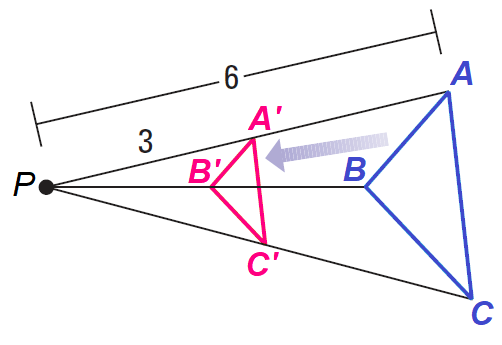
Reduction : k = PA'/PA = 3/6 = 1/2 < 1.
Enlargement :
The dilation is an enlargement if k > 1.
It has been illustrated in the diagram shown below.
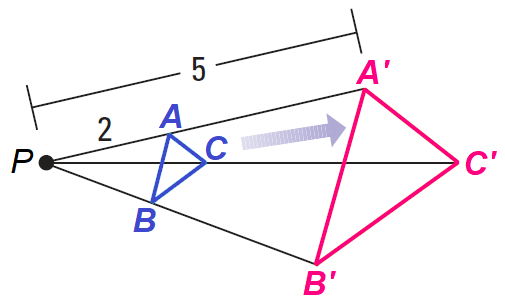
Enlargement : k = PA'/PA = 5/2 > 1.
Because ΔPQR ∼ ΔP'Q'R', P'Q' / PQ is equal to the scale factor of the dilation.
Identifying Dilations
Example 1 :
Identify the dilation and find its scale factor.
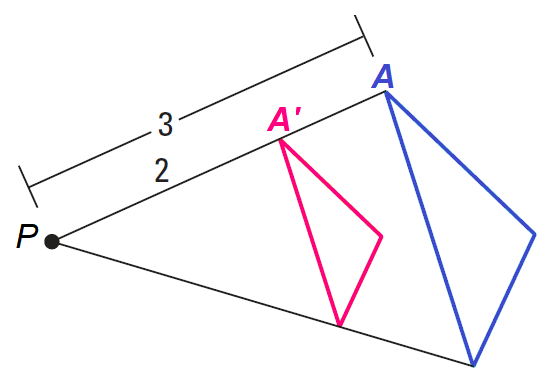
Solution :
Because PA'/PA = 2/3, the scale factor is 2/3.
Because the scale factor 2/3 is less than 1, this is a reduction.
Example 2 :
Identify the dilation and find its scale factor.
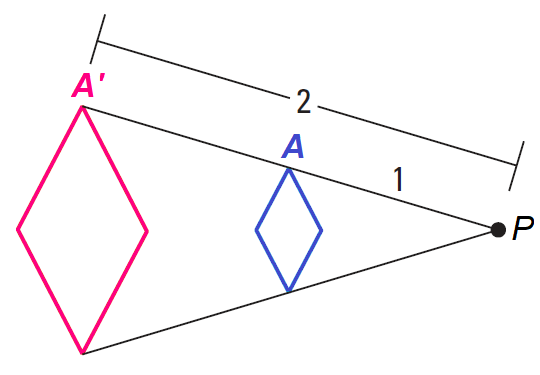
Solution :
Because PA'/PA = 2/1, the scale factor is 2.
Because the scale factor 2 is greater than 1, this is an enlargement.
Dilation in a Coordinate Plane
In a coordinate plane, dilations whose centers are the origin have the property that the image of A (x, y) is
A'(kx, ky)
Example 3 :
Draw a dilation of rectangle ABCD with
A(2, 2), B(6, 2), C(6, 4) and D(2, 4)
Use the origin as the center and use a scale factor of 1/2. How does the perimeter of the preimage compare to the perimeter of the image?
Solution :
Because the center of the dilation is the origin, we can find the image of each vertex by multiplying its coordinates by the scale factor 1/2.
P(2, 2) ----> P'(1, 1)
Q(6, 2) ----> Q'(3, 1)
R(6, 4) ----> R'(3, 2)
S(2, 4) ----> S'(1, 2)
Let us plot the above points in xy-plane.
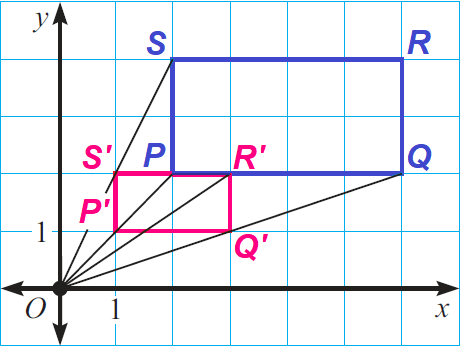
From the graph, we can see that the preimage has a perimeter of 12 and the image has a perimeter of 6. A preimage and its image after a dilation are similar figures. Therefore, the ratio of the perimeters of a preimage and its image is equal to the scale factor of the dilation.
Using Dilations in Real life
Example 4 :
Shadow puppets have been used in many countries for hundreds of years. A flat figure is held between a light and a screen. The audience on the other side of the screen sees the puppet’s shadow. The shadow is a dilation, or enlargement, of the shadow puppet. When looking at a cross sectional view,
ΔLCP ∼ ΔLSH
The shadow puppet shown below is 12 inches tall (CP in the diagram). Find the height of the shadow, SH, for each distance from the screen. In each case, by what percent is the shadow larger than the puppet?
a. LC = LP = 59 in. ; LS = LH = 74 in.
b. LC = LP = 66 in. ; LS = LH = 74 in.
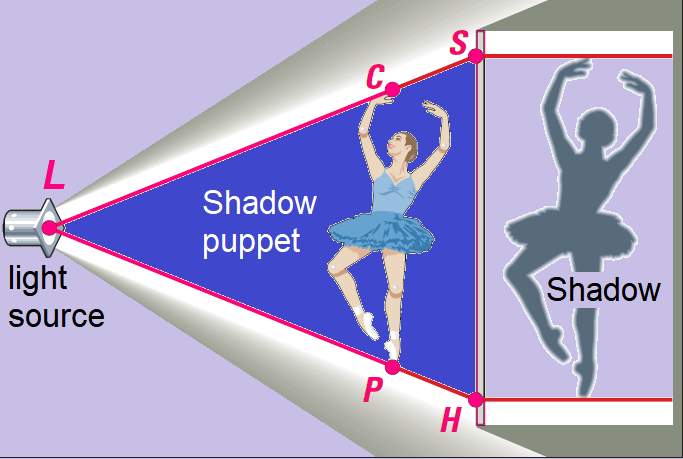
Solution (a) :
59/74 = 12/SH
By reciprocal property of proportion,
74/59 = SH/12
SH/12 = 74/59
Multiply each side by 12.
12 ⋅ (SH/12) = (74/59) ⋅ 12
SH ≈ 15
To find the percent of size increase, use the scale factor of the dilation.
Scale factor = SH/CP
Scale factor = 15/12
Scale factor = 1.25
So, the shadow is 25% larger than the puppet.
Solution (b) :
66/74 = 12/SH
By reciprocal property of proportion,
74/66 = SH/12
SH/12 = 74/66
Multiply each side by 12.
12 ⋅ (SH/12) = (74/66) ⋅ 12
SH ≈ 13.45
To find the percent of size increase, use the scale factor of the dilation.
Scale factor = SH/CP
Scale factor = 13.45/12
Scale factor = 1.12
So, the shadow is 12% larger than the puppet.
Subscribe to our ▶️ YouTube channel 🔴 for the latest videos, updates, and tips.
Kindly mail your feedback to v4formath@gmail.com
We always appreciate your feedback.
About Us | Contact Us | Privacy Policy
©All rights reserved. onlinemath4all.com

Recent Articles
-
10 Hard SAT Math Questions (Part - 45)
Jan 18, 26 06:52 PM
10 Hard SAT Math Questions (Part - 45) -
10 Hard SAT Math Questions (Part - 44)
Jan 12, 26 06:35 AM
10 Hard SAT Math Questions (Part - 44) -
US Common Core K-12 Curricum Algebra Solving Simple Equations
Jan 07, 26 01:53 PM
US Common Core K-12 Curricum Algebra Solving Simple Equations
